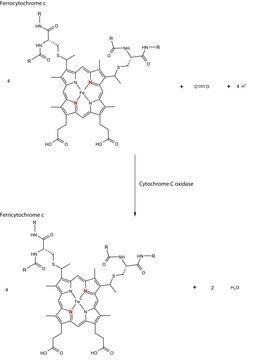SML2716
Pitolisant hydrochloride
≥98% (HPLC)
别名:
1-[3-[3-(4-Chlorophenyl)propoxy]propyl]piperidine hudrochloride, 1-{3-[3-(4-Chlorophenyl)propoxy]propyl}piperidine hydrochloride, 3-(4-Chlorophenyl)propyl 3-piperidinopropyl ether hydrochloride, BF 2649, BF2.649, Ciproxidine, Tiprolisant
登录查看公司和协议定价
所有图片(1)
About This Item
推荐产品
品質等級
化驗
≥98% (HPLC)
形狀
powder
儲存條件
desiccated
顏色
white to beige
溶解度
H2O: 2 mg/mL, clear
儲存溫度
2-8°C
InChI
1S/C17H26ClNO.ClH/c18-17-9-7-16(8-10-17)6-4-14-20-15-5-13-19-11-2-1-3-12-19;/h7-10H,1-6,11-15H2;1H
InChI 密鑰
XLFKECRRMPOAQS-UHFFFAOYSA-N
生化/生理作用
Potent and selective competitive antagonist/inverse agonist of histamine H3 receptor
訊號詞
Warning
危險聲明
危險分類
Repr. 2
儲存類別代碼
11 - Combustible Solids
水污染物質分類(WGK)
WGK 3
閃點(°F)
Not applicable
閃點(°C)
Not applicable
Benjamin Huyts et al.
European journal of pharmacology, 851, 63-68 (2019-02-17)
Pitolisant, a selective inverse agonist for the histamine H3 receptor, is a new treatment for adults suffering from narcolepsy. Numerous studies have shown that striatal H3 receptors can modulate the activity of the dopamine mesolimbic system, a neuronal pathway that
Jorge D Brioni et al.
The Journal of pharmacology and experimental therapeutics, 336(1), 38-46 (2010-09-25)
H(3) antagonists increase the release of brain histamine, acetylcholine, noradrenaline, and dopamine, neurotransmitters that are known to modulate cognitive processes. The ability to release brain histamine supports the effect on attention and vigilance, but histamine also modulates other cognitive domains
我们的科学家团队拥有各种研究领域经验,包括生命科学、材料科学、化学合成、色谱、分析及许多其他领域.
联系技术服务部门
